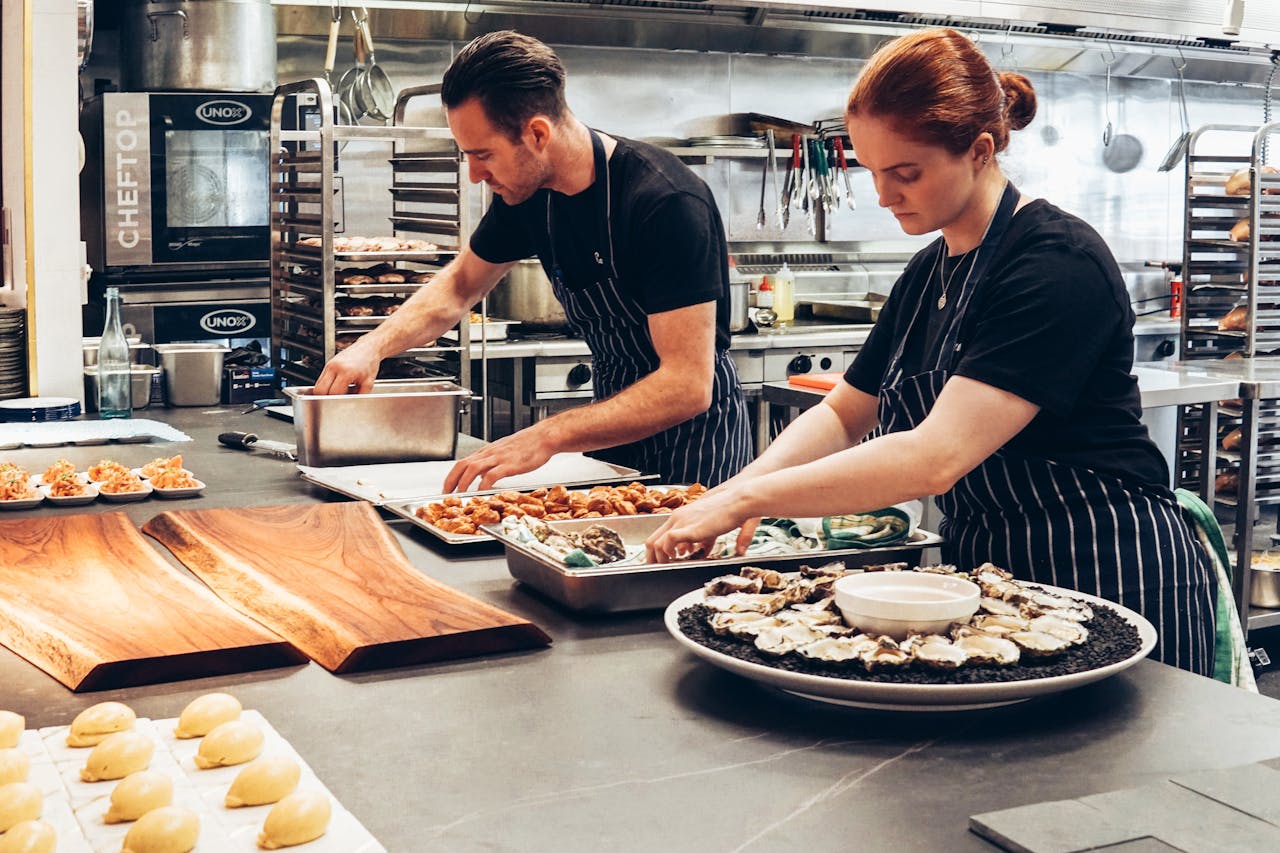Comments
- No comments found

Technology is impacting many industries, including the food service industry.
According to the State of the Restaurant Industry 2024, the industry has been resilient in the past year. It has persevered despite its many challenges: inflation, elevated costs, uneven customer traffic levels, and shallow labor pools.
A significant part of the industry's resiliency is attributed to consumers. The accumulation of savings during the pandemic and a healthy labor market enabled spending to continue robustly. In 2024, consumer demand plays a key role as well.
The economic environment could offer households relief. As interest rates are expected to fall and inflation is relatively controlled, consumers could still allocate budgets to food spending.
However, disinflation is not equivalent to deflation. Therefore, consumer prices will continue to rise and eat up more significant parts of budget categories. Debt and delinquency could cause problems with household balance sheets, reducing dining out or using food services.
Technology can offset these factors. As much as 76 percent of food service operators say using efficiency-enhancing technology gives them a competitive edge.
Here, we delve into how technological advancements such as CRM systems and online order integration platforms reshape cost structures, revenue streams, and the competitive landscape of food establishments.

Technology has made restaurant operations more automated and streamlined, leading to significant benefits for businesses.
The most recent State of the Restaurant Industry report reveals that many operators are investing in technology. In 2023, 50 percent devoted resources to making dining areas more productive and efficient, and 48 percent invested in tech to enhance the customer experience.
Four in 10 kitchens use technology to enhance productivity. The statistics show a growing trend, as even more operators plan tech-related investments in these areas in 2024.
Here are various technological tools, software, and business models used by restaurants and their impact on operational efficiency
Restaurants need help managing their menus on multiple delivery apps such as DoorDash, Uber Eats, and Grubhub. Cuboh, an online order integration platform, consolidates orders placed on various delivery apps into one tablet, minimizing the chaos of juggling multiple tablets for restaurants.
By simplifying the management of multiple delivery apps, this solution reduces errors in the ordering process, which leads to higher customer satisfaction and encourages repeat business for restaurants.
Modern POS (Point of Sale) systems can integrate with online ordering platforms, ensuring seamless order processing and inventory management.
These integrated POS and online ordering systems automatically update the food business's inventory levels with each sale. As a result, restaurant workers receive real-time data that helps them make informed bulk purchasing decisions.
The integration also streamlines the payment process, reducing customer wait times and increasing table turnover rates, directly impacting revenue.
Automated inventory management systems enable real-time inventory tracking, reducing waste and optimizing stock levels. They alert staff when stock levels are low, preventing over-ordering and under-ordering.
This precision helps maintain a balanced inventory for the business. It reduces food waste and optimizes costs.
According to recent data, restaurants contribute 15 percent of all landfill food waste. AI-powered automated inventory systems can reduce food waste, translating to significant cost savings and environmental benefits.
Customer relationship management or CRM systems facilitate targeted marketing campaigns based on tracked customer preferences and purchasing behavior. By using these systems to analyze customer purchase history and preferences, restaurants can tailor their offers and promotions to individual customers, increasing the likelihood of repeat business.
For example, customers who frequently order vegan dishes can receive personalized promotions for new vegan menu items. These practices enhance customer engagement and loyalty.

Online ordering and delivery services such as third-party delivery apps expand an establishment's customer base beyond its physical location. Uber Eats, DoorDash, and other platforms create large pools of potential customers and connect them with food businesses. Restaurants that partner with these platforms can increase their sales volume without expanding their physical space.
Subscription-based models eliminate the thinking behind daily menus and the hassle of food preparation. They provide convenience and other benefits for customers.
Offering subscription-based meal plans can create a steady revenue stream and build customer loyalty. These subscription models, where customers pay a monthly fee for a set number of meals, provide predictable revenue and encourage repeat business.
This model particularly appeals to busy professionals and families seeking convenient, healthy meal solutions.
Today’s restaurants can create virtual brands that operate solely online. These brands can tap into niche markets without the overhead of a physical location.
Moreover, these new brands are more agile than traditional models. They can experiment with various concepts and cuisines, adapting quickly to market trends. Virtual brands can reach a broad audience soon through delivery apps, increasing revenue without significant upfront investment.
Ghost kitchens are facilities focused exclusively on preparing food for delivery. They reduce operational costs and increase efficiency. Ghost kitchens can serve multiple virtual brands from a single location, maximizing the use of kitchen space and resources. This business model is particularly effective in urban areas with high demand for delivery services.
Technology's growing economic impact continues to be felt in the food service industry. According to the latest industry reports, increasing profitability while reducing costs is crucial. It also streamlines operations, expands market reach, and enhances customer satisfaction.
As the food and restaurant industry evolves, embracing technology will be crucial for keeping a competitive edge. Restaurants that select and invest in the right technology will benefit from unlocking new revenue streams and building stronger customer relationships.
The future of food service is undeniably intertwined with technological innovation, and those who adapt will thrive in this dynamic landscape.
Leave your comments
Post comment as a guest